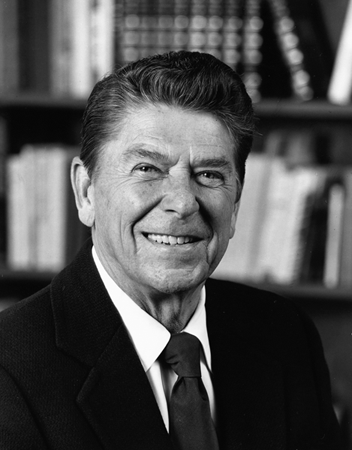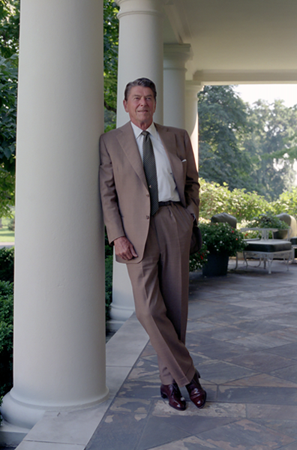
One of many official presidential portraits, 1980s.
The Reagan family
There were no hard and fast rules about what a former president should or should not do when Ronald Reagan prepared to leave office. The American political system did not have an established set of expectations for ex–chief executives. It was standard procedure for former presidents to write autobiographies, establish presidential libraries, and perhaps politick for party candidates. Beyond that, however, the role of a former president largely depended on how he shaped it. Although Reagan was proud to have been elected president twice, and was aware of the fact that those accomplishments made him more famous than anything else he had done, he did not view his service as president as the only important chapter of his life. There had been other moments in his life—his time spent at Eureka College, WHO Radio, and Warner Bros. and as the governor of California—that meant something to him, too. Reagan did not view leaving the White House as the end of anything, but rather as the start of an exciting and meaningful new chapter in his life that would be active and fulfilling. He was in the unique position of leaving office after two successful terms as president—the first president to do so since Dwight D. Eisenhower. And he remained immensely popular. Whether or not he wanted to be in the public eye, he was certainly in high demand. World leaders valued his insight and friendship, political candidates wanted and needed his help, and the public at large still wanted to know what he thought about key issues.
He was excited about his foundation and building his presidential library and museum. He also was looking forward to writing his autobiography and expressing some thoughts that were probably better shared once he was out of office. Ronald Reagan understood the unique platform a former president could have, and was determined to use it in a way that continued to serve his country and advance the cause of freedom around the world. The remaining years of his life, from 1989 to 2004, were punctuated by several personal and professional milestones, and he proved to be every bit as active as he had been as president.

Portrait of President Reagan in the White House Colonnade, 1980s.
The Ronald Reagan Presidential Library